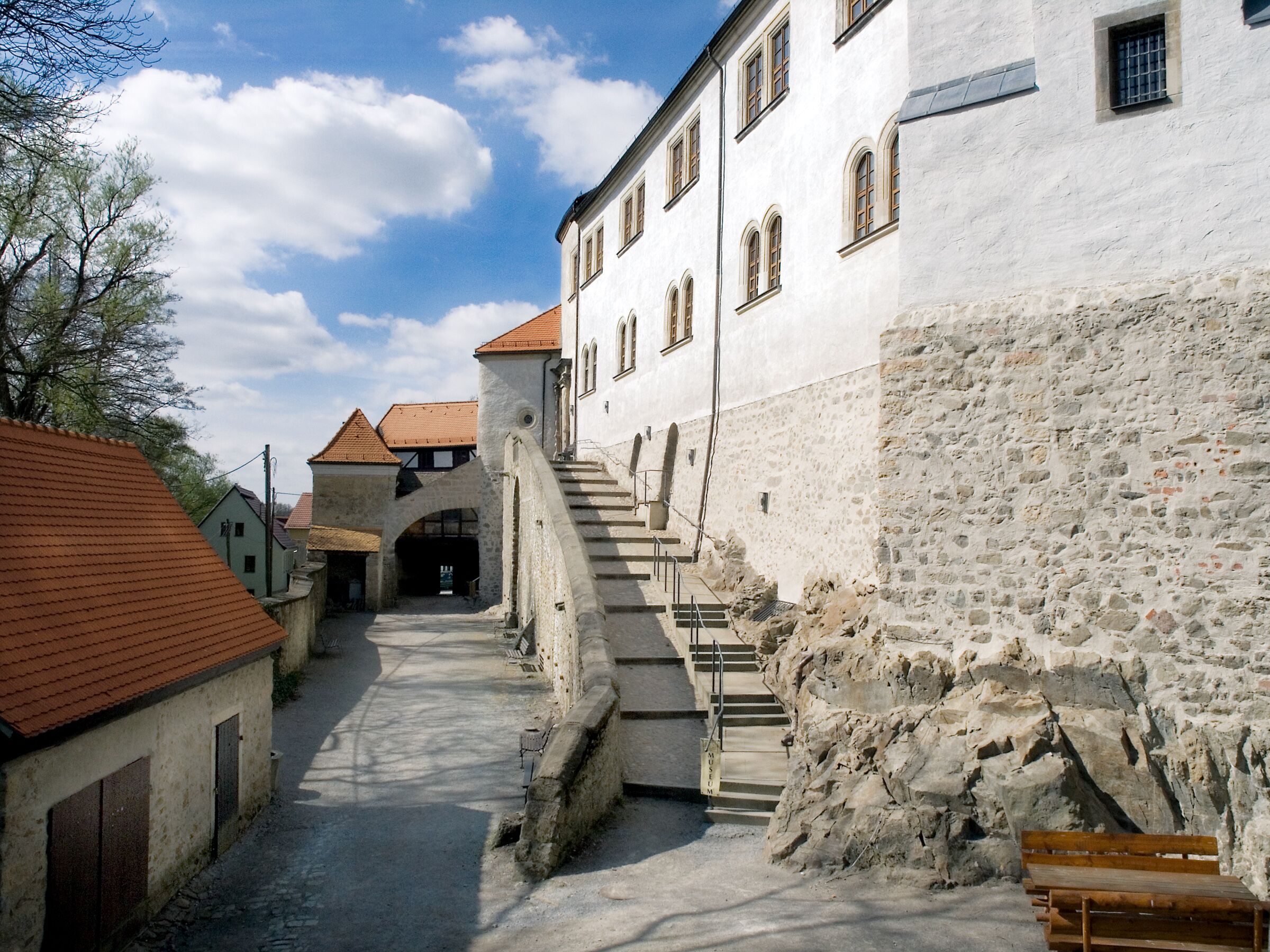Having been extensively reconstructed over the last few years, Klippenstein Castle is now the most impressive architectural monument in the city of Radeberg. It is also among the most significant surviving examples of sovereign architecture built during the reign of Moritz Elector of Saxony, a famous ruler from the House of Wettin. Members of the Saxon nobility often resided here. The influence of the Renaissance remains visible in many architectural details at Klippenstein Castle in Radeberg.
The history of the castle dates back to 1289 when it was first mentioned as "Castrum Radeberch" in official records. From 1543 to 1546, Moritz of Saxony had the castle converted into a hunting lodge and residential palace. Because of its location on a wedge-shaped cliff, it became known as “Schloss Klippenstein” or "Klippenstein Castle". (The German word “Klippe” means cliff. Therefore, “Schloss Klippenstein” can be translated roughly as “Cliff Castle” in English).
Both its use as a noble residence and its use as a government administrative building greatly influenced the historical development of the castle complex. The poet August Friedrich Ernst Langbein descends from the dynasty of the Langbein family, who were the Electoral Officials at Klippenstein Castle in the 18th and early 19th centuries. It was not until 1952 that the district court was moved to another location, thus ending the era of the castle´s use as a government administrative building and clearing the way for it to house the heritage museum. All of these eras have left their mark on the castle.
Although the Museum's exhibits provide visitors with extensive information regarding the architectural and usage history of the castle, it is the castle itself that remains the museum´s most important attraction. „The Black Kitchen” and the adjacent Treasury in the south wing of the main castle, which house valuable objects from various periods in the castle´s history, are the centerpieces of the newly created exhibit. (“The Black Kitchen” gets its name from the deposits of soot that still remain on its ceiling.) The adjoining rooms provide an insight into the rich history of the city of Radeberg spanning from its foundation to the mid-19th Century. Based on important documentary evidence, the diverse industrial development of the city of Radeberg is presented to visitors in special exhibits.
Klippenstein Castle is a cultural center for the Radeberg region, offering a wide range of events and exhibitions, rental opportunities, guided tours and educational programs for children.

